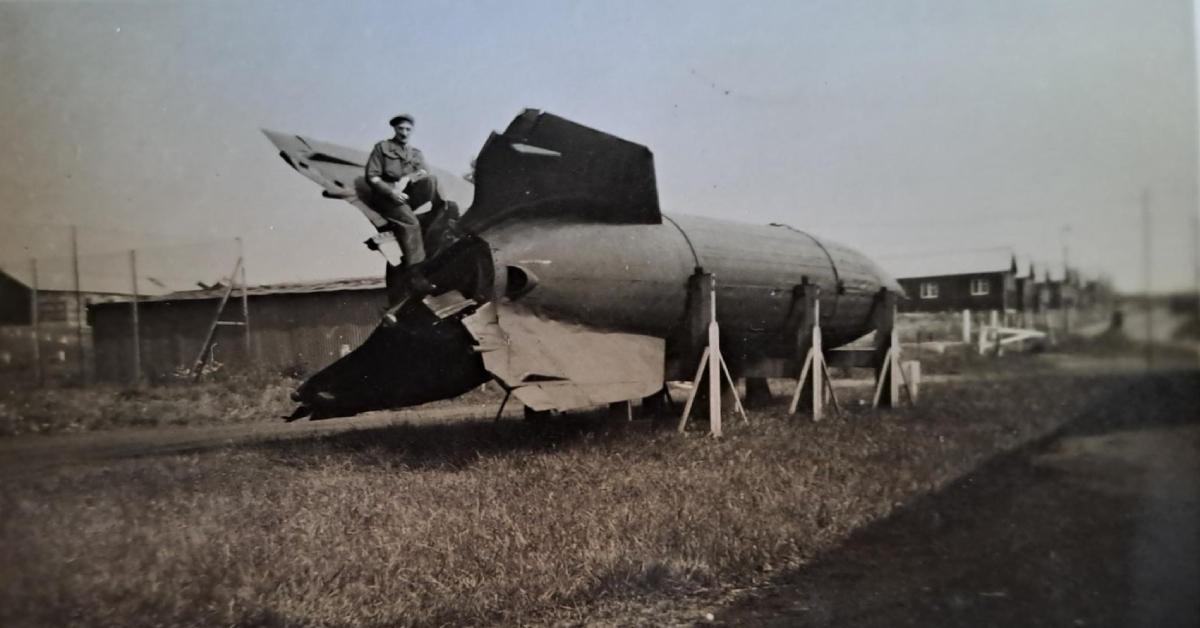20
Jun 2024
How Ripon was at the forefront of wartime bomb disposal techniques

This is part of a series of articles by Michael Furse, a trustee of the charity Ripon Military Heritage Trust, explaining the significance of the city’s military heritage — and why the trust is fighting to preserve it as part of the the 1,300-home Clotherholme development.
The Stray Ferret is backing the trust’s campaign to save the heritage, as reported here. Please sign the petition here. If it gets 500 signatures it will be debated by North Yorkshire Council’s Skipton and Ripon area constituency committee.
Besides Bailey bridge testing and training, the Royal Engineers School of Military Engineering taught other essential engineer skills.
This article will look at the Bomb Disposal School, which moved to Ripon in 1941.
The German Blitz on London in 1940 necessitated a very steep learning curve for bomb disposal. An innocuous enough term, it refers to the incredibly dangerous job of defusing and making safe explosive ordnance – conventional bombs, landmines and incendiary bombs.
Concentrating bomb disposal training in one place allowed the development of a centre of excellence that could be kept informed of any new developments promptly and train engineers accordingly.
Some readers will remember the ITV series Danger UXB, which was set in the Blitz and its aftermath. In part based on the memoirs of a Royal Engineer bomb disposal officer, the series gave a good idea of how the fuses and booby traps developed and were countered. Unsurprisingly, when the Americans entered the war after the bombing of Pearl Harbour in December 1941, they turned to the UK.
In early 1942, a small group of American servicemen, led by Major T. Kane, visited Ripon Barracks to train alongside the Royal Engineers at the Bomb Disposal School. With British support, Kane established his own copy of the Bomb Disposal School at the Aberdeen Proving Ground, Maryland back in the USA.
The vital role played by bomb disposal personnel was recognised by Queen Mary during WW2, and she designed a badge that is still in use today, worn with considerable pride by those who practice this dangerous profession. Major Kane’s cadre of bomb disposal engineers proudly took the badge back to the US with them, and he is considered to be the father of US Army Bomb Disposal, arguably making his instructors in Ripon the grandfathers.

Bomb disposal unit badge
The Bomb Disposal School in Ripon continued to train bomb disposal personnel throughout the war and after, and we are the very grateful recipient of some remarkable photos taken by WO1 Victor Lamert, an instructor in Ripon from 1944 to 1948. The very large bomb he is sitting on is a V2 rocket, captured by the Allies at Peenemunde at the end of the war in Europe.
We understand the same rocket spent some days in front of the Town Hall in Ripon prior to its move to Harper Barracks, where this picture was taken. You can still get up close to a V2 rocket at the Imperial War Museum in London. The first ballistic missile was a terrifying weapon, as its speed and ballistic trajectory meant that there was literally no warning before it impacted and exploded. A V2 landed on a busy Woolworths store in New Cross, London, on the 25th November 1944, killing 168 people, including 33 children, and injuring a further 123 people.

The V2 rocket. Credit: WO1 Victor Lamert.
Most of the bombs on which sappers were trained could be defused, and training in 1947-48 still covered German incendiary containers and Japanese bomb fuses. But Victor Lamert was multi-skilled, as are many Engineers. In 1948 a series of photographs were taken at the junction of the Ripon Canal and the River Ure.
This one shows him entering the Oxclose lock, perhaps to check the lock gates.

Victor Lamert in the lock. Credit: WO1 Victor Lamert.
We hope that this article along with its predecessors will convince you, if you are not already convinced, that our campaign to preserve sufficient of Ripon’s military heritage is not only worthy of your support but also of national importance.
See our website for further details on how you can help.
0